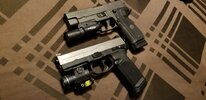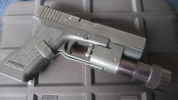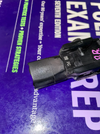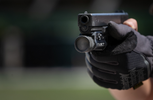Which is why I am personally a fan of X300s extending past the muzzle. We are issued the compact TLR-1s on Glock 45s currently, and they sit flush with the muzzle. Im not a fan. Not only are they weak, I like having that standoff for contact distances on a duty pistol. My personal recommendation for nightstand pistols is they should be duty sized.No, not normally. Finding a holster for your particular pistol/WML combination can sometimes be a problem, though.
What @wally said: The possible advantage, granted for unlikely scenarios, is that the WML (absolutely has to be securely mounted, they can loosen up) can conceivably be used as a "stand-off" if one has to deploy the pistol against the body of an assailant -- and could actually prevent failure to return to battery as would happen if the muzzle were against the body. When my last employer started equipping us with WMLs (we began with Streamlight TLR-1s, the old ones, not the excellent HL high-lumen editions), we actually incorporated this into our firearms training when we covered the issue of having to go hands-on...
Now if we discuss CC pistols with WMLs, the decision matrix changes significantly. I probably am looking atna micro TLR-6 then.






